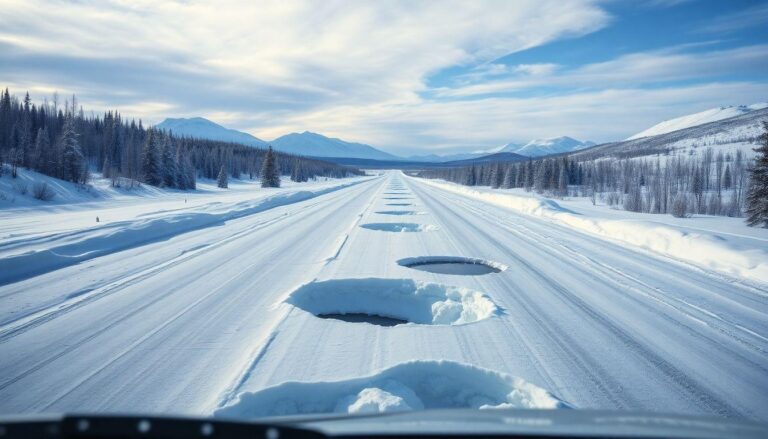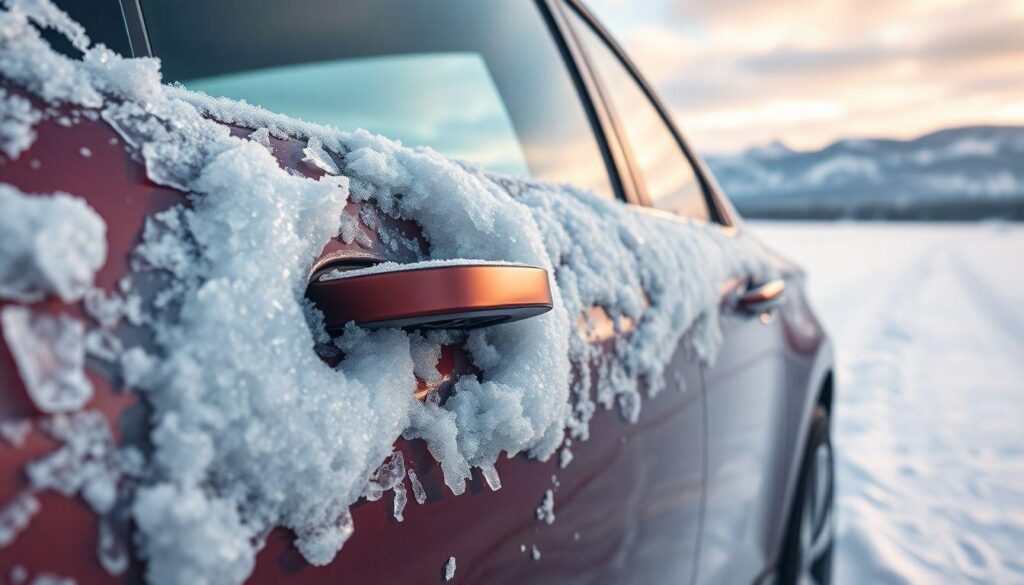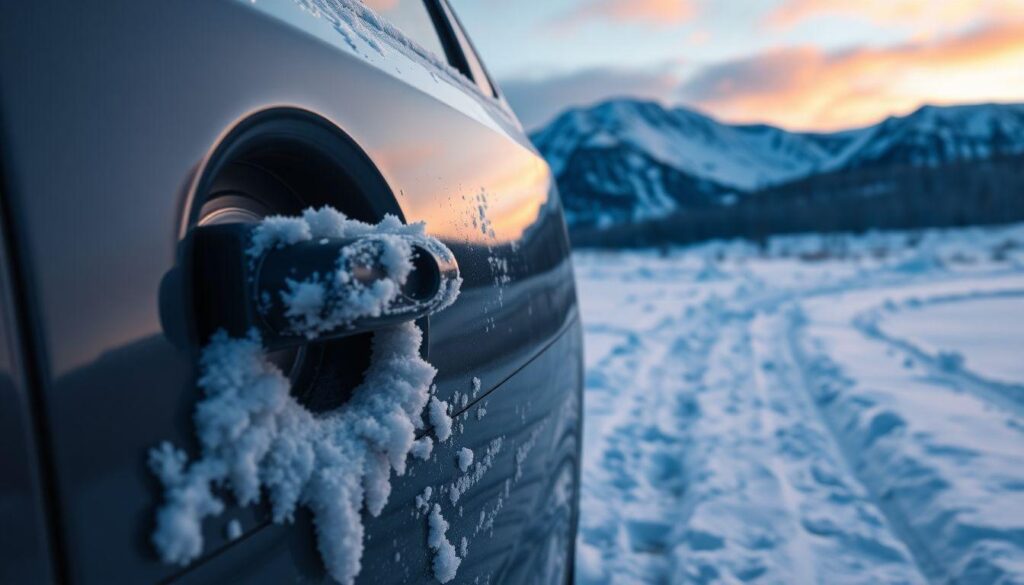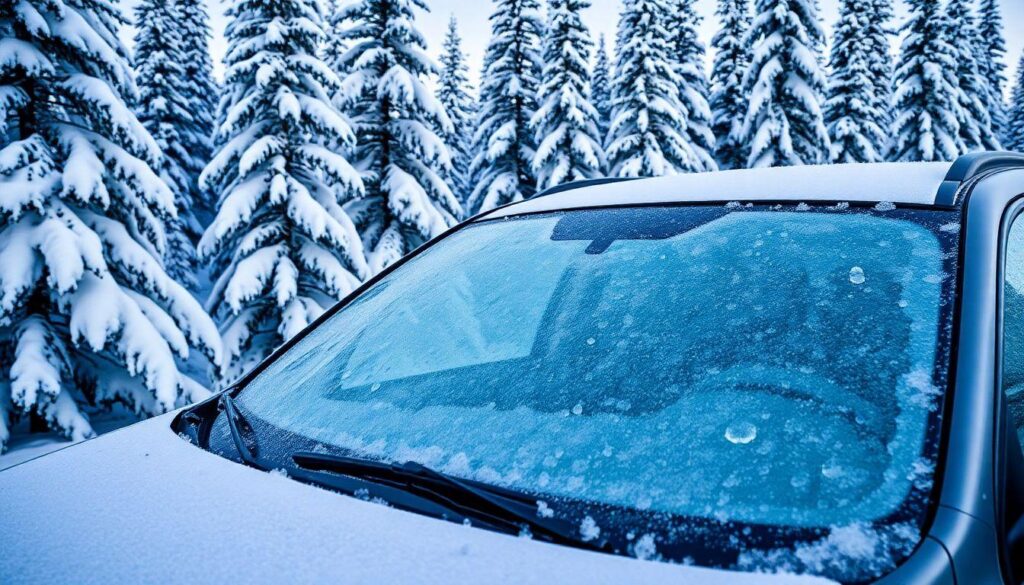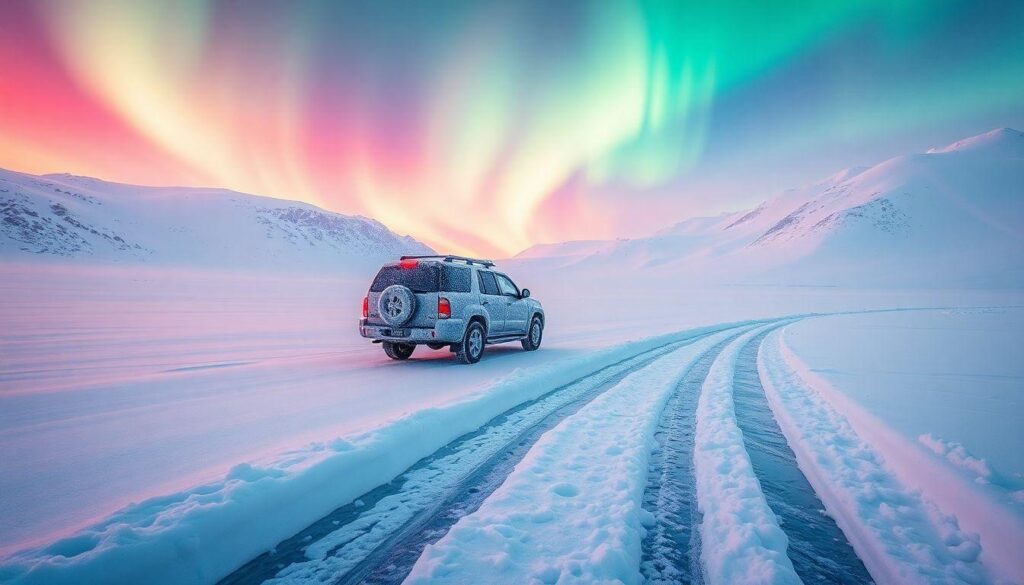Living in Canada’s true north brings unique challenges that most drivers down south simply don’t face. When winter arrives in Yukon, it doesn’t just knock politely – it barges through your door with temperatures that make your car groan and road conditions that test every piece of equipment you own. Your windshield, that crystal-clear barrier between you and the elements, becomes particularly vulnerable during these harsh months.
The combination of brutal cold and roads that look like they’ve been through a war zone creates the perfect storm for windshield cracks from Yukon winter potholes. You’re probably nodding along if you’ve ever hit one of those craters disguised as potholes while your windshield was already stressed from sub-zero temperatures. That sickening crack sound echoes through your car, and suddenly you’re facing an expensive repair bill.
Why Yukon’s Winter Roads Are So Brutal on Your Windshield
The science behind this destruction is actually pretty fascinating, though you might not appreciate it when you’re staring at a spider web of cracks across your field of vision. When temperatures plummet to -30°C or lower, your windshield glass contracts significantly. Think of it like a rubber band that’s been left in the freezer – it becomes rigid and brittle.
Meanwhile, Yukon’s roads are getting pummeled by the same freeze-thaw cycles that affect your windshield. Water seeps into tiny cracks in the asphalt, freezes and expands, then thaws and contracts. This constant cycle creates those bone-jarring potholes that seem to appear overnight. When your already-stressed windshield meets these road craters, something’s got to give.
The timing couldn’t be worse either. Just when your glass is at its most vulnerable state, you’re forced to navigate an obstacle course that would challenge a rally driver. It’s like asking someone to thread a needle while riding a mechanical bull.
Temperature Shock: Your Windshield’s Worst Enemy
Here’s something many people don’t realize – the greatest danger often comes from rapid temperature changes rather than just cold weather alone. Picture this scenario: you’ve been driving with your heater blasting on a -25°C morning, and then you hit a massive pothole. The sudden impact combined with the thermal stress can cause an immediate crack.
Your windshield experiences different temperatures across its surface. The interior might be warm from your heating system, while the exterior faces arctic air. This creates internal stress that makes the glass incredibly susceptible to impact damage.
Smart Prevention Strategies That Actually Work
Now that we understand why this happens, let’s talk about what you can actually do about it. Prevention isn’t just about driving carefully – though that certainly helps. It requires a multi-layered approach that addresses both the environmental challenges and your driving habits.
Pre-Winter Windshield Preparation
Before winter really sets in, inspect your windshield thoroughly. Look for any existing chips or small cracks – these will become major problems once the temperature drops. Even a tiny chip can expand dramatically in extreme cold.
- Schedule professional inspection and repair of any existing damage
- Consider applying a protective film designed for harsh weather conditions
- Check your windshield wipers and replace them if they’re worn
- Ensure your defroster system is working properly
This preparation phase is crucial because once winter hits full force, your options become limited. Many repair shops reduce their hours or close temporarily during the worst weather, leaving you stuck with a damaged windshield.
Strategic Route Planning
You know your local roads better than any GPS system ever will. Use that knowledge to your advantage. Some roads consistently develop worse potholes than others – usually the ones that see heavy truck traffic or have poor drainage.
Consider keeping a mental map of trouble spots and plan alternate routes when possible. Yes, it might add ten minutes to your commute, but that’s nothing compared to the time and money you’ll spend dealing with windshield damage.
Mastering Cold Weather Driving Techniques
The way you drive in extreme cold makes a massive difference in protecting your windshield. This goes beyond just slowing down – though speed control is absolutely critical.
The Gentle Approach
When you spot a pothole ahead, resist the urge to brake hard or swerve dramatically. Both actions can actually increase the stress on your windshield. Instead, slow down gradually and try to straddle the pothole if it’s safe to do so.
If you must hit a pothole, try to approach it straight-on rather than at an angle. This distributes the impact more evenly across your vehicle’s suspension system, reducing the jarring effect that transfers to your windshield.
Temperature Management Inside Your Vehicle
Here’s a tip that might surprise you: avoid blasting your heater directly onto a cold windshield. The rapid temperature change can cause thermal shock, making your windshield more prone to cracking when you hit that inevitable pothole.
Instead, warm up your car gradually. Start with lower heat settings and gradually increase the temperature. This gives your windshield time to adjust without creating dangerous stress points.
Emergency Response When Prevention Fails
Despite your best efforts, you might still end up with windshield damage from winter potholes. How you respond in those first few minutes can make the difference between a minor repair and a complete windshield replacement.
If you hear that telltale crack sound, don’t panic. Pull over safely when you can and assess the damage. Small chips can often be repaired quickly and inexpensively, but they need immediate attention in cold weather because they’ll spread rapidly.
Temporary Protection Measures
While you’re arranging for professional repair, protect the damaged area from moisture and further temperature stress. Clear tape can provide temporary protection for small chips, though this is definitely a short-term solution.
Avoid using your windshield wipers over damaged areas, and be extra gentle with your defroster. The last thing you want is to turn a small chip into a major crack while you’re waiting for repair services.
When to Call in the Professionals
Some windshield damage requires immediate professional attention, especially in extreme cold. Cracks longer than a few inches, damage in your line of sight, or multiple impact points all warrant urgent repair.
Don’t try to tough it out until spring – winter driving with a compromised windshield isn’t just expensive when it fails completely, it’s genuinely dangerous. Your windshield provides structural support to your vehicle, and that becomes even more critical in challenging winter driving conditions.
Making Smart Investment Decisions
Quality matters when it comes to windshield protection and repair. Cheap fixes often fail when tested by Yukon’s extreme conditions. Research local glass shops that understand northern climate challenges and use materials rated for extreme temperature variations.
Consider upgraded glass options if you’re replacing your windshield. Some manufacturers offer enhanced products specifically designed for harsh climates, with improved resistance to thermal shock and impact damage.
Your windshield faces unique challenges in Yukon’s winter environment, but with proper preparation, smart driving techniques, and quick response to damage, you can significantly reduce your risk of major problems. Remember that preventing windshield cracks from winter potholes requires consistent effort throughout the season, not just reactive measures after damage occurs. The combination of extreme cold and brutal road conditions doesn’t have to mean inevitable windshield replacement – stay vigilant, drive smart, and don’t hesitate to address small problems before they become big ones.
If you found these tips helpful, feel free to share this article with your friends and followers who also brave Yukon’s challenging winter roads!

